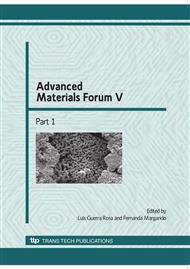p.1150
p.1157
p.1165
p.1172
p.1178
p.1186
p.1194
p.1199
p.1206
Application of the Dang Van Fatigue Criterion to the Rail/Wheel Contact Problem
Abstract:
Great interest is dedicated to the wheel/rail contact problem, in particular as a result of some accidents worldwide and also in Portugal. In the present work a three dimensional finite element analysis of the wheel/ rail contact problem was performed using the software ABAQUS. A preliminary study on simpler geometries was carried out, in order to identify the solution strategies giving more accurate solutions. The influence of mesh refinement, friction coefficient, and numerical techniques as Lagrange and penalty functions were analysed in the simpler cases of contact of two cylinders along a generatrix, and the contact of a cylinder and a rigid plane. The corresponding Hertz solutions were programmed using MATLAB in order to compare with the finite element analyses. The numerical procedures giving better results were later applied to the wheel/rail contact problem, using standard rail and wheels profiles used by the Portuguese Railways company (CP). The influence of small geometry variations on the stress analysis results was then studied, and the study of initiation of defects using the Dang Van fatigue criterion was performed.
Info:
Periodical:
Pages:
1178-1185
Citation:
Online since:
January 2010
Price:
Сopyright:
© 2010 Trans Tech Publications Ltd. All Rights Reserved
Share:
Citation:


